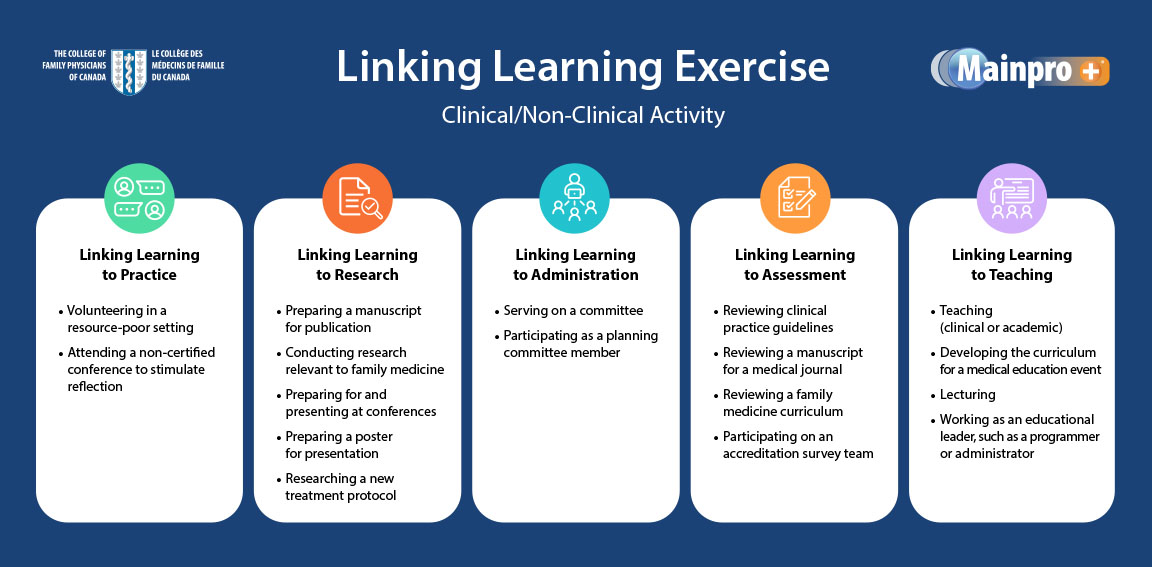Linking Learning
Quickly access your online form to earn up to five Mainpro+® certified
assessment credits.
Log in to your account
Linking Learning: Finding opportunities in day-to-day activities
Learning can happen anywhere at any time. Structured programs like conferences and journal clubs are great learning experiences, but what about that conversation you had with your team pharmacist? Or all the research you had to do to treat a complex patient?
Linking Learning exercises allow you to claim five Certified Assessment credits for any formal or informal learning opportunity.
There are five activities : Linking Learning to Practice, Teaching, Research, Administration, and Assessment.
The Linking Learning exercises will walk you through the steps you took to learn and apply new information that made an impact on your practice.
Linking Learning steps:
- Describe the learning activity
- Consider the information that was presented during the activity
- Critically appraise the information provided by using additional resources
- Make a decision about your practice based the new information
- Evaluate the impact of your decision
Each completed Linking Learning exercise is eligible for five Mainpro+ Certified Assessment credits. There is no limit to the number of exercises you can complete in a cycle.

Linking Learning Form
Getting started
All Linking Learning forms are available on the Mainpro+ portal. You can find them under the Certified Assessment menu.
Tip
The form is designed to allow you to save a partially completed entry and finish it later. In fact, we recommend that you take six to 12 weeks to assess the impact of your activity and then return to complete the form.
Eligible activities
The following infographic shows which Linking Learning exercise to use for various activities you may engage in as part of your day-to-day work life.
Practice questions
-
Linking Learning to Research
You recently attended medical rounds on breast cancer. You learned that the local breast cancer screening program is using a different set of recommendations than those used in your office. You ask yourself: “Which recommendations apply best to my patients, and how can I be sure that all of my eligible patients are being screened by either myself or the local program?” Document the process and resources you use to answer this question in a Linking Learning to Research form.
-
Linking Learning to Assessment
You participated in a provincial quality improvement program as a coach/mentor. You spent time with a fellow physician, reviewing their CPD plan and helping them set learning goals. This required you to assess their CPD needs and provide feedback on their goals. Describe your assessment techniques in a Linking Learning to Assessment exercise.
-
Linking Learning to Administration
You would like to adopt the Patient’s Medical Home (PMH) vision for your clinic. You decide to lead your current colleagues and staff through the transition. Outline your plan to align with the PMH vision in a Linking Learning to Administration exercise to earn credits.
-
Linking Learning to Practice
You spent six months volunteering in the Philippines providing prenatal care to families with low incomes. Document how this experience will affect your current practice in a Linking Learning to Practice exercise.
-
Linking Learning to Teaching
You conducted a two-hour, hands-on workshop on intrauterine device insertion at Family Medicine Forum. After reviewing the participant evaluations, you noted several attendees would have liked more interaction with the speaker. Use a Linking Learning to Teaching exercise to review the feedback and document how you could restructure the workshop to allow more time for participant interaction.
